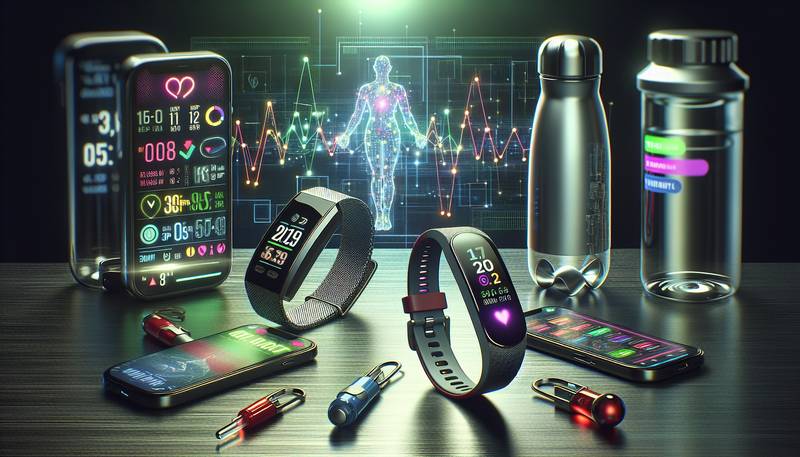Wearable Fitness Tech: Beyond the Step Counter

When it comes to fitness, technology has been a game-changer. With the advent of wearable fitness tech, we've seen a shift from traditional fitness methods to a more modern, data-driven approach. Gone are the days where the only feedback you received from your workout was how sore you felt the next day. Today, we have access to a wealth of information about our bodies and our workouts, all thanks to wearable fitness tech.
The Evolution of Wearable Fitness Tech
Wearable fitness tech has come a long way since its inception. The first wearable fitness devices were simple step counters, or pedometers, which tracked the number of steps taken. These devices were revolutionary at the time, giving individuals a way to quantify their daily activity levels. However, as technology has advanced, so too has the capabilities of wearable fitness tech.
Today's wearable fitness devices go beyond just counting steps. They can track everything from heart rate to sleep patterns, and even provide workout recommendations personalized to your fitness goals. With the vast array of options available, it's no wonder that the wearable fitness tech market is expected to reach $27 billion by 2022.
Features of Modern Wearable Fitness Tech
Modern wearable fitness tech offers a plethora of features that make it easier than ever to stay on top of your fitness goals. Here are just a few of the features you can find in today's devices:
- Heart rate monitoring: Many devices now include heart rate monitors, giving you real-time feedback on how hard you're working during your workout.
- Sleep tracking: Sleep is a crucial component of overall health and fitness, and many devices now include sleep tracking features to help you optimize your rest.
- GPS tracking: For runners and cyclists, GPS tracking is a must-have feature. It allows you to track your route and distance, and even share your workouts with friends.
- Workout recommendations: Some devices now include personalized workout recommendations based on your fitness level and goals, taking the guesswork out of planning your workouts.
Wearable Fitness Tech for Different Types of Athletes
One of the great things about wearable fitness tech is that there's a device for every type of athlete. Whether you're a runner, cyclist, swimmer, or just someone looking to get more active, there's a device out there that's perfect for you. Here are a few examples:
- For runners: The Garmin Forerunner series is designed specifically for runners, with features like GPS tracking and heart rate monitoring.
- For cyclists: The Wahoo ELEMNT series is a popular choice for cyclists, with features like GPS tracking and the ability to connect to cycling sensors for even more data.
- For swimmers: The Garmin Swim 2 is designed specifically for swimmers, with features like pool and open-water swim tracking.
- For general fitness: The Fitbit Inspire 2 is a great option for those looking to get more active, with features like all-day activity tracking and sleep tracking.
The Future of Wearable Fitness Tech
As technology continues to advance, the future of wearable fitness tech looks bright. We're already seeing devices that can track things like hydration levels and stress levels, and it's likely that we'll see even more advanced features in the future. In addition, the rise of AI and machine learning means that devices will be able to provide even more personalized feedback and recommendations.
One thing is for sure: wearable fitness tech is here to stay. With the wealth of information and feedback these devices provide, it's never been easier to stay on top of your fitness goals and achieve the results you're after.
Conclusion
In conclusion, wearable fitness tech has come a long way since the humble step counter. With features like heart rate monitoring, sleep tracking, and GPS tracking, these devices provide a wealth of information that can help you optimize your workouts and achieve your fitness goals. Whether you're a runner, cyclist, swimmer, or just someone looking to get more active, there's a wearable fitness device out there for you. And with the continued advancements in technology, the future of wearable fitness tech looks brighter than ever.


